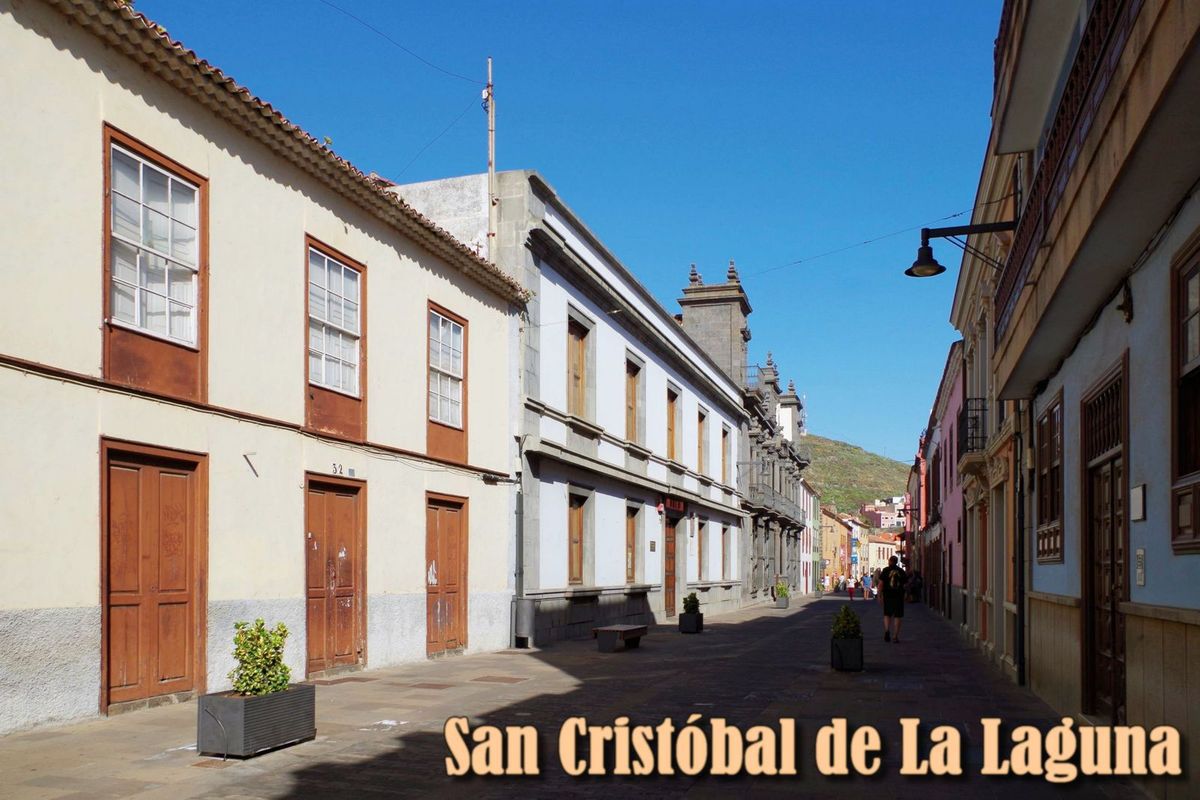Gleichzeitig mit den Profanbauten erfolgte im 16. Jahrhundert der Bau von Sakralbauten. Seit dem 17. Jahrhundert fand eine bemerkenswerte Stagnation statt, sowohl was die Bautätigkeit betraf, als auch bezüglich der Bevölkerungszunahme. Wenn man die Zahlen der Bevölkerungserhebungen vergleicht, ergibt sich folgendes Bild: Im Jahr 1561 gab es in La Laguna 7.220 Bürger. Im Jahr 1805 hatte sich die Zahl nur auf 9.672 erhöht. Das heißt, dass in rund zweieinhalb Jahrhunderten nur 2.452 Bürger hinzugekommen waren. Der Verlust der Bedeutung La Lagunas begann im Jahr 1648 mit der Verleihung der Stadtrechte an die Ortschaft La Orotava. Bis zu diesem Zeitpunkt war das Cabildo, der Stadtrat von La Laguna, identisch mit der Inselverwaltung.
Die wirtschaftliche und politische Krise der Stadt hielt auch im folgenden Jahrhundert an. Im Jahr 1723 verlegte der Capitán General seinen Amtssitz nach Santa Cruz. Im Gegensatz dazu steht das Aufblühen der Kunst und der Kultur innerhalb der Stadt im 18. Jahrhundert. Im 18. Jahrhundert ist La Laguna die Stadt der Salons, der Schriftsteller und Künstler unter dem Mäzenatentum der vornehmen Familien (Nava y Grimón, Saviñón, Román usw.), in denen die laufenden künstlerischen und politischen Strömungen Europas, die auf der Insel offenbar auffallend präsent waren, diskutiert wurden. Es ist auch die Stadt der glänzenden Fassaden, es ist wirklich die Hauptstadt des gehobenen städtischen Lebens, der Gesellschaft, der Kunst und der intellektuellen Bewegung.
(Quelle: https://de.wikipedia.org/wiki/San_Crist%C3%B3bal_de_La_Laguna)
-
Simultaneously with the secular buildings took place in the 16th century the construction of religious buildings. Since the 17th century a remarkable stagnation took place, both in terms of construction activity concerned, as well as with respect to the increase in population. When comparing the figures of population surveys, the following picture emerges: In 1561 there were in La Laguna 7,220 citizens. In 1805, the number had increased to only 9,672. This means that in two and a half centuries only 2,452 citizens were added. The loss of meaning La Lagunas began in 1648 with the award of municipal rights to the town of La Orotava. Until that time, the Cabildo, the City Council of La Laguna was identical with the island administration.
The economic and political crisis of the city continued into the following century. In 1723 the Capitán General moved its headquarters to Santa Cruz. In contrast, the flourishing of art and culture is inside the city in the 18th century. In the 18th century La Laguna is the city's salons, the writers and artists under the patronage of noble families (Nava y Grimón, Saviñón, Román, etc.), in which the current artistic and political currents in Europe that seem on the island striking were present, were discussed. It is also the city of the gleaming facades, it really is the capital of the upscale urban life, society, the arts and intellectual movement.
(Source: https://de.wikipedia.org/wiki/San_Crist%C3%B3bal_de_La_Laguna)
-
Simultáneamente con los edificios civiles tuvo lugar en el siglo 16 la construcción de edificios religiosos. Desde el siglo 17 un estancamiento notable llevó a cabo, tanto en términos de actividad de la construcción en cuestión, así como con respecto al aumento de la población. Al comparar las cifras de las encuestas de población, obtiene el siguiente cuadro: En 1561 hubo en La Laguna 7.220 ciudadanos. En 1805, el número había aumentado a solamente 9.672. Esto significa que en dos siglos y medio se añadieron a sólo 2.452 habitantes. La pérdida de sentido La Lagunas comenzó en 1648 con la concesión de los derechos municipales de la ciudad de La Orotava. Hasta ese momento, el Cabildo, el Ayuntamiento de La Laguna era idéntica a la administración de la isla.
La crisis económica y política de la ciudad continuó en el siglo siguiente. En 1723 el Capitán General, trasladó su sede a Santa Cruz. Por el contrario, el florecimiento del arte y la cultura se encuentra dentro de la ciudad en el siglo 18. En el siglo 18 La Laguna es salones de la ciudad, los escritores y artistas bajo el patrocinio de las familias nobles (Nava y Grimón, Saviñón, Román, etc.), en el que las corrientes artísticas y políticas actuales en Europa que parecen en la sorprendente isla estaban presentes, fueron discutidos. Es también la ciudad de las fachadas relucientes, lo que realmente es la capital de la vida urbana de lujo, la sociedad, las artes y el movimiento intelectual.
(Fuente: https://de.wikipedia.org/wiki/San_Crist%C3%B3bal_de_La_Laguna)...









/idata%2F2273638%2FFotoserie-3%2F528a.jpg)
/idata%2F2273638%2F6--malerei%2Ftanz-des-Glucks.jpg)
/idata%2F2273638%2FFotoserie-2%2F345adventkalender--4-.jpg)
/idata%2F2273638%2F5--malerei%2F340.jpg)
/idata%2F2273638%2FFotoserie%2F-196-196.jpg)
/idata%2F2273638%2F4--malerei%2F186-an-der-wand.jpg)
/idata%2F2273638%2FKunst-am-Turm-2012%2FP6240434_stitchkl.jpg)
/idata%2F2273638%2FFotokollagen%2F2.jpg)
/idata%2F2273638%2Fkompositionen%2FBetakampffisch.jpg)